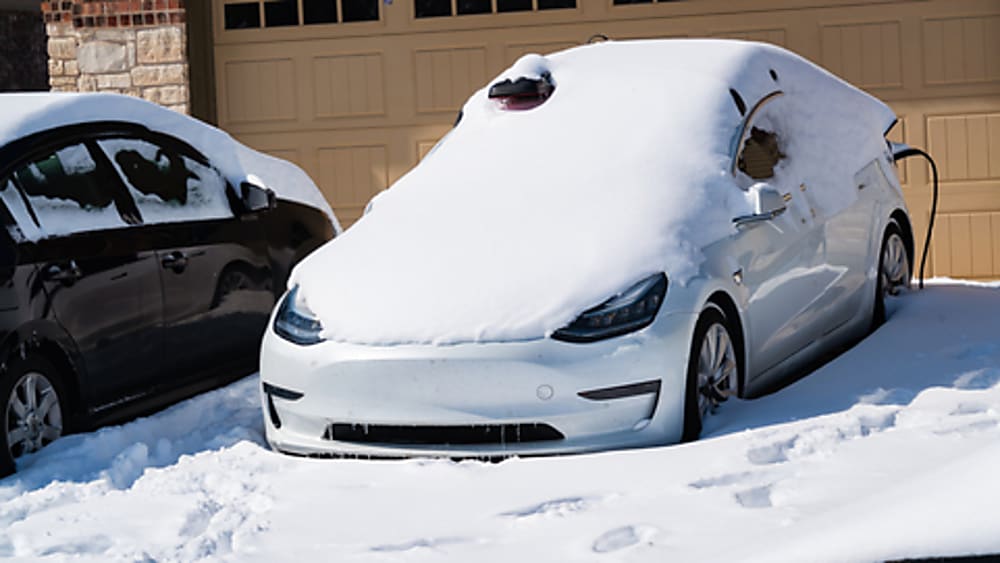Tire maintenance & safety
3 major winter safety tips

Best price guarantee
Tire replacement coverage
24/7 roadside assistance
Easy returns
Tire maintenance & safety

Safety is a major concern on dangerous winter roads.
Extreme weather, increased holiday travel, and more combine to create one of the most dangerous seasons on the road. But not to worry, there's actually a lot that drivers can do to prevent accidents before they happen, increasing the odds of having a safe and enjoyable cold season.
Knowing what to look out for and how to prepare takes the worry out of winter car and tire safety.
Here’s what you can do to prepare for the seasons to change.
Preparing your car to handle winter conditions before they set in is the most proactive step you can take to have a safe cold season. Each change of seasons is a great time to perform general maintenance but winter comes with its own set of tasks to keep your car and tires in top shape.
The optimum time to install winter tires is all about one thing, air temperature. Winter tires are designed for peak performance at temperatures below 45 degrees. Use weather predictions to gauge when you should swap your tires based on the local climate.
A key feature of winter tires is their aggressive tread design. Ensuring the tire’s tread is undamaged is essential to winter tire safety. At the beginning of the cold-weather season, inspect the tread depth of your winter tires. Tires are considered bald at 2/32 of an inch. Replacing your tires before they hit this benchmark is best for safety.
There is a persistent myth that winter tires perform better when they're underinflated. Theoretically, a softer tire can grip imperfections on the surface of the street providing better traction.
Winter tires are designed to remain soft at lower temperatures. Their heavily-engineered tread patterns are optimized for winter conditions. It's important to keep winter tires filled to 32 to 34 PSI. Cold weather can change the air pressure in your tires. Always check tire pressure when the wheels have been stationary for a minimum of three hours for an accurate reading.
Rims play a large role in winter safety, more than most may realize. Before mounting your winter tires, inspect your rims for signs of damage or corrosion. Check protective coatings for points of wear that may lead to rust.
Applying a sealant can protect your rims from harsh winter environmental hazards. Take the time to clean and prepare our rims before installing winter tires, and they'll last season after season.
Winter conditions can mean unexpected situations. Preparing ahead of time can mean the difference between a minor inconvenience and a major setback.
Take some time to consider what you could need in a cold-weather incident and have those items on hand before anything happens. Don't forget to frequently rotate items such as bottled water, batteries, or emergency foods as necessary.

Cold weather is winter's primary defining feature. The cold can quickly become the most deadly part of the season in an emergency. Keep your fuel tank full or battery charged as much as possible.
If you become lost or stranded, having fuel to run your car and produce heat can save your life. Avoid being caught out in the cold with an empty fuel tank or low charge. Paying a little more at the pump or charger today could save you tomorrow.
Many drivers keep emergency supplies like tools or water in their vehicles. Adding some winter-specific items at the beginning of the season is an easy way to avoid cold-weather pitfalls. Items such as hand warmers, emergency blankets, warm clothes, and flashlights make sense for these dark and cold months.
Before you hit the frozen winter streets, take some time to familiarize yourself with the resources you may need in the event of a winter incident.
Research local vehicle recovery services that can help retrieve vehicles in snowy conditions. Have this information on hand before you need it to avoid scrambling during a severe situation.
Winter driving equipment like snow tires is only part of the solution. Winter driving safety begins with adjusting the way you drive for the conditions around you.
You can't control the weather, road conditions, or other drivers.Employ caution in winter driving to avoid cold-season incidents.
Slick roads are a common hazard of winter driving. Frozen rain, snow, and ice-especially black ice-reduce traction and increase the time it takes to stop. Many winter collisions can be avoided by increasing the distance between cars.
Cruise control is helpful when driving conditions are optimal. Cruise control allows drivers to maintain acceleration with little to no input, with more advanced systems offering distance control options for added safety.
But on slippery winter roads, when every second counts, drivers lose valuable seconds when speedschange quickly when in cruise control.
When the weather is cold, take your time. Speed is the enemy of winter drivers traveling on slick roads. Slowing down overall traveling speed and individual maneuvers gives drivers the necessary time to react. A few seconds could mean the difference between life and death.
Braking is a tricky business on slippery winter roads. Stopping can be more dangerous than decelerating. Gently pumping your brakes will almost always perform better after a loss of traction than attempting to come to a complete stop. Avoid aggressive application of the brakes when possible.

The winter season poses some of the most extreme challenges drivers face all year. Knowing some tips and tricks can help you prepare for this challenging time of year and avoid unnecessary incidents. By carefully preparing your vehicle, anticipating potential emergencies, and driving for the conditions around you, winter doesn't have to mean added headaches.
Search By